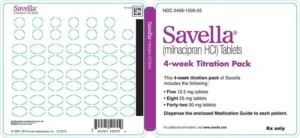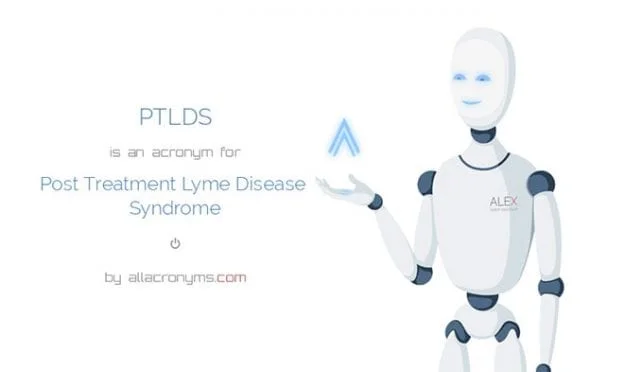Al menos el 5-15 % de pacientes con enfermedad de Lyme (7.500 “ 45.000 nuevos casos cada año) desarrollan el síndrome de Lyme post tratamiento (PTLS), síntomas residuales debilitantes que duran meses o años, incluso después de haber recibido tratamiento con antibióticos. A menudo los pacientes con PTLS experimentan dolor crónico en los músculos, articulaciones o nervios.
No es infrecuente que los pacientes tratados de la enfermedad de Lyme con un curso de antibióticos recomendado de 2 a 4 semanas tengan síntomas persistentes de fatiga, dolor o dolores articulares y musculares en el momento de terminar el tratamiento. En un pequeño porcentaje de casos, estos síntomas pueden durar más de 6 meses. Aunque a veces se le llama «enfermedad de Lyme crónica«, esta situación se conoce correctamente como «síndrome post-tratamiento de la enfermedad de Lyme» (PTLD).
La causa exacta del PTLD no se conoce todavía. La mayoría de expertos médicos creen que los síntomas persistentes son el resultado del daño residual a los tejidos y al sistema inmune que se ha producido durante la infección. Se sabe que se producen complicaciones similares y respuestas «autoinmunes» después de infecciones, como Campylobacter (síndrome de Guillain-Barré), Chlamydia (síndrome de Reiter), y amigdalitis estreptocócica (cardiopatía reumática). Por el contrario, algunos médicos les dicen a los pacientes que estos síntomas reflejan la infección persistente por Borrelia burgdorferi. Los estudios recientes en animales han dado lugar a cuestiones que requieren más investigación. Y hay en curso estudios clínicos para determinar la causa del síndrome post-tratamiento de Lyme en los seres humanos.
Independientemente de la causa de PTLD, los estudios no han demostrado que los pacientes que recibieron cursos prolongados de antibióticos tengan mejores resultados a largo plazo que los pacientes tratados con placebo. Además, el tratamiento con antibióticos a largo plazo para la enfermedad de Lyme se ha asociado con complicaciones graves. La buena noticia es que los pacientes con PTLD casi siempre mejoran con el tiempo; la mala es que pueden pasar meses hasta que se sientan completamente bien.
Si has recibido tratamiento para la enfermedad de Lyme y todavía te sientes mal, consulta a tu médico para discutir cómo aliviar tu sufrimiento. Tu médico puede tratarte de manera similar a los pacientes que tienen fibromialgia o síndrome de fatiga crónica. Esto no debe llevarte a error, sino que quiere decir que tu médico está haciendo frente a tus síntomas utilizando las mejores herramientas disponibles.
Es normal que te sientas abrumado por tus síntomas. Algunas cosas que pueden ayudar a manejar el PTLD incluyen:
- Consultar con el médico para asegurarte de que la enfermedad de Lyme no es lo único que afecta a tu salud.
- Puede ser útil llevar un diario de los síntomas, los patrones de sueño, la dieta y el ejercicio para ver cómo éstos influyen en tu bienestar.
- Mantener una dieta saludable y descansar lo suficiente.
- Compartir tus sentimientos. Si tu familia y amigos no pueden proporcionarte el apoyo que necesitas, habla con un especialista que puede ayudarte a encontrar formas de manejar tu vida durante este momento difícil.
¿Se benefician los pacientes con síndrome post-Lyme de un tratamiento con medicina que reduzca el dolor central?
Debido a que muchos pacientes con este síndrome tienen dolor que persiste pese a los antibióticos y porque sabemos que los medicamentos que modulan las vías de acceso del dolor al cerebro pueden ayudar a reducir o eliminar el dolor, el Centro Médico de la Universidad de Colombia (Nueva York) trata a los pacientes con una medicina aprobada por la FDA Administración de Alimentos y Medicamentos para el tratamiento del dolor. Este medicamento se conoce como Milnacipran (el nombre comercial es Savella); esta medicina no es adictiva y se ha demostrado que reduce el dolor crónico por sus múltiples acciones en las vías de acceso del dolor.

En este mismo Centro se ha probado si el dolor puede mejorarse incluso añadiendo una medicina que es conocida por modular la transmisión de glutamato implicado con el dolor en el cerebro. Esta medicina “D cycloserina– es realmente un antibiótico, actualmente aprobado para el tratamiento de la tuberculosis. Por su acción en los receptores de glutamato, se supone que ayudara a disminuir el dolor incluso en pacientes con dolor relacionado con el Lyme
Finalmente, se ha investigado si los pacientes con síndrome post-tratamiento de Lyme tienen circuitos de dolor pro-activo central en el cerebro. Porque el dolor se procesa a través de los circuitos de dolor del cerebro, se ha examinado si las personas que sufren de PTLS tienen circuitos de dolor hiper-activo que les hacen más sensibles al dolor que los que tienen circuitos de dolor normalmente-activos. Para hacer esto, se ha comparado a los pacientes con PTLS a voluntarios sanos mediante la realización de estudios neurológicos cuidadosos e imágenes del cerebro o resonancias magnéticas funcionales (fMRI), técnica usada en los estudios de neuromarketing para lograr imágenes de la actividad del cerebro cuando realiza una tarea.
Todavía está en estudio cómo el cerebro procesa las señales de dolor en el síndrome post-tratamiento del Lyme y si este enfoque de tratamiento es efectivo.
En Biosalud Day Hospital se dispone de una Unidad Especializada. En ella se utilizan todas las técnicas que han demostrado ser efectivas para el tratamiento de la enfermedad de Lyme, especialmente en el Lyme crónico. Sueroterapia, aféresis terapéutica, hipertermia, ozonoterapia, oxigenoterapia, acupuntura, fotonterapia, terapia de biorregulación, magnetoterapia focal son algunas de ellas.
En la enfermedad de Lyme, es necesario combinar algunas de estas técnicas para poder curar al paciente.

